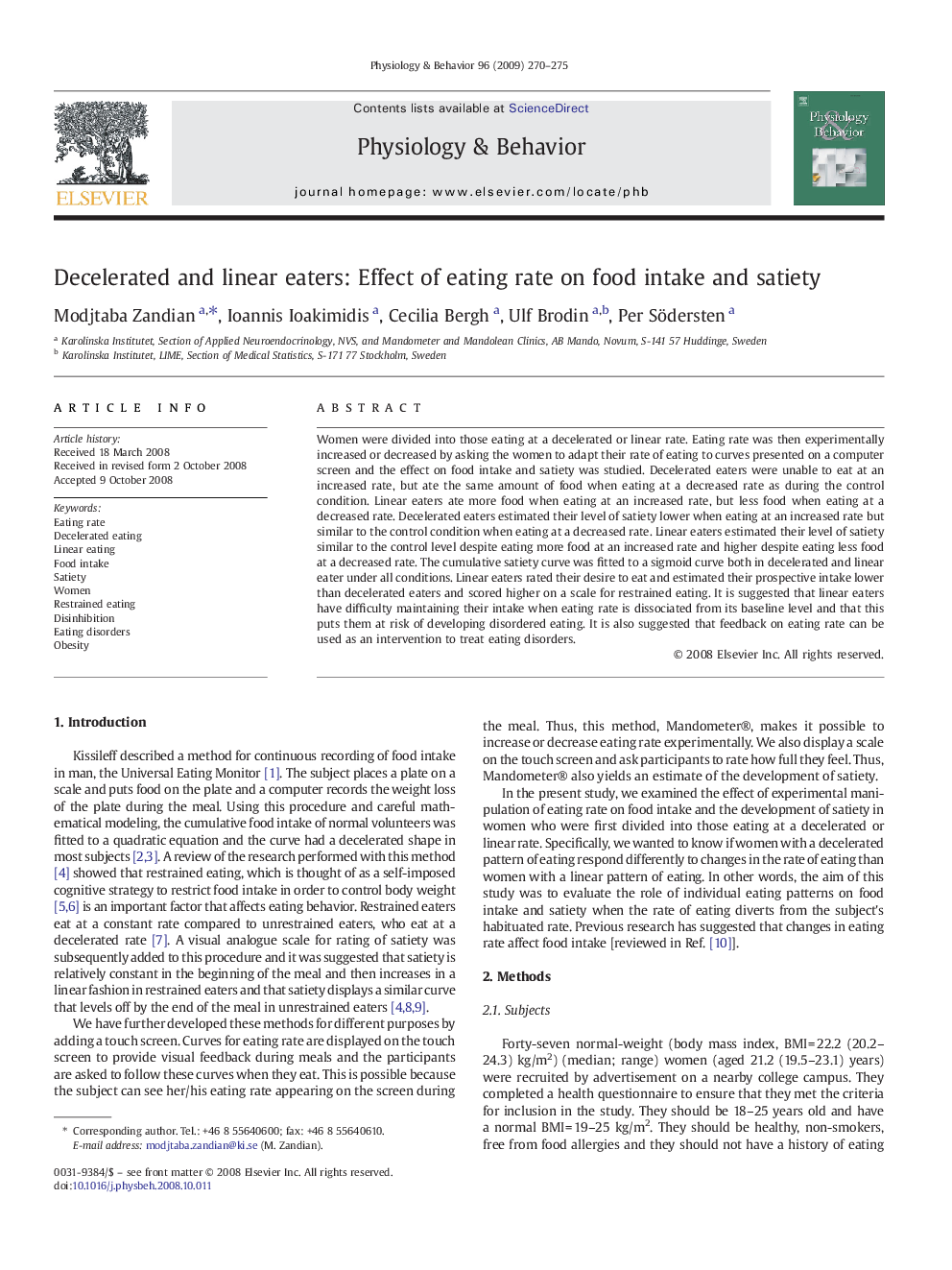| Article ID | Journal | Published Year | Pages | File Type |
|---|---|---|---|---|
| 2845219 | Physiology & Behavior | 2009 | 6 Pages |
Women were divided into those eating at a decelerated or linear rate. Eating rate was then experimentally increased or decreased by asking the women to adapt their rate of eating to curves presented on a computer screen and the effect on food intake and satiety was studied. Decelerated eaters were unable to eat at an increased rate, but ate the same amount of food when eating at a decreased rate as during the control condition. Linear eaters ate more food when eating at an increased rate, but less food when eating at a decreased rate. Decelerated eaters estimated their level of satiety lower when eating at an increased rate but similar to the control condition when eating at a decreased rate. Linear eaters estimated their level of satiety similar to the control level despite eating more food at an increased rate and higher despite eating less food at a decreased rate. The cumulative satiety curve was fitted to a sigmoid curve both in decelerated and linear eater under all conditions. Linear eaters rated their desire to eat and estimated their prospective intake lower than decelerated eaters and scored higher on a scale for restrained eating. It is suggested that linear eaters have difficulty maintaining their intake when eating rate is dissociated from its baseline level and that this puts them at risk of developing disordered eating. It is also suggested that feedback on eating rate can be used as an intervention to treat eating disorders.
